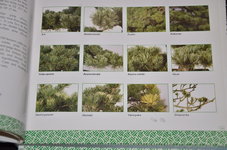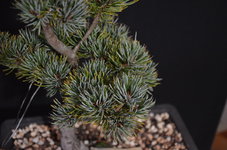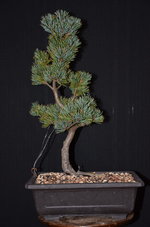Cherubina
Seedling
I just bought this, and it had an Iseli tag. The graft had some needles on it that the nurseryman broke off, as they would become too dominant, but I did get to see them. It was a fine, yellowish green looking set of needles.
My question is, can I re-pot now? I have everything I need, and I'd just like to move it from the 8" tall round nursery plastic to a 10" round heavier sturdier pot, and let it grow. Can I wire it a little also, or would that be too much abuse?
As I write this I'm actively trying to find out what the graft species was.
Thanks fellow nuts!
My question is, can I re-pot now? I have everything I need, and I'd just like to move it from the 8" tall round nursery plastic to a 10" round heavier sturdier pot, and let it grow. Can I wire it a little also, or would that be too much abuse?
As I write this I'm actively trying to find out what the graft species was.
Thanks fellow nuts!













